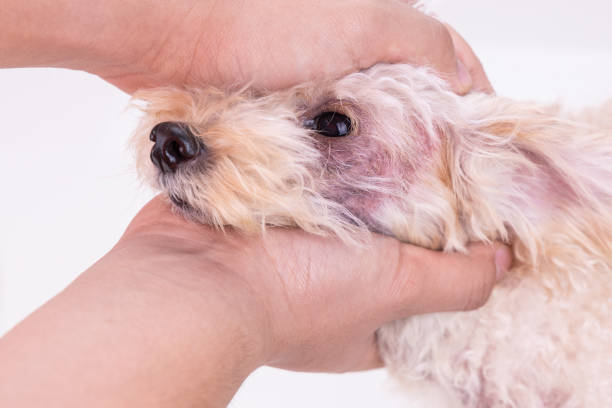Diabetes can manifest in our cherished pets anywhere between a manageable sickness to a deadly disease. This disorder occurs when a pet’s body does not manufacture sufficient insulin, a hormone that regulates blood sugar levels. Dogs affected with diabetes might need more frequent feeding and additional attention relative to healthier dogs. Luckily, there are evident signs of the disease that you can keep an eye on in your dog.
You may want to consider: Healthiest Foods to Give Your Dog


What is Canine Diabetes?
When pets become obese with canine diabetes, the pancreas produces too much insulin, while the kidneys receive insufficient insulin. Insulin helps to absorb glucose out of the bloodstream and transport it to the intestines in cells for growth and expansion. It can also help to stimulate cellular growth.
A diabetic dog’s body cannot control glucose levels in its blood. In excess, these levels can have consequences called hyperglycaemia. Some dogs can get through it for a bit, but a lot of them become unwell when they get another illness or have a urinary infection.
Symptoms, Causes, Treatment of Dog’s Diabetes
Diabetes mellitus, otherwise known as sugar diabetes, is the type of diabetes most commonly seen in dogs. Glucose is essential energy within the body’s cells and organs. Insulin serves as the gatekeeper by telling cells to keep food and blood glucose from going away from the body.
This conversion of food nutrients into energy to power cells consists of an ongoing interplay of two things: glucose and insulin. Although diabetes cannot be cured, it can be treated very effectively. It’s an abnormal metabolic system that impacts dogs, cats, and other creatures (including birds, pigeons, and horses) and humans.
Main Symptoms of Canine Diabetes
Excessive Thirst
One sign of diabetes is drinking an excessive amount of water. Some dogs drink excessively when they’re feeling anxious or when they’re in pain, but if this occurs when your dog is just sitting around or not feeling well, it might be worth talking to your vet about possible diabetes. Increased thirst may also be one of the first symptoms of diabetes in dogs.
Increased Appetite
Another sign of diabetes is increased hunger. If your dog becomes excessively hungry but isn’t eating more food, this may also signify that something’s wrong with his health. Talk to your veterinarian about possible causes if you notice this behaviour. Your vet can perform blood tests and diagnose the problem so your pup can start getting treatment right away.
Weight Loss
If your dog has been getting steadily fatter without any accompanying weight loss or if his stomach hangs over his hindquarters like an old tire (an indication of pancreatitis), then he might have diabetes.
Most diabetic dogs in the more advanced stage have the following symptoms:
- Vomiting
- Low energy level
- Loss of appetite
- Depression
These warning signs might also mean that your pet has a urinary tract infection, so it’s best to bring him in for a checkup.
If you notice any of these signs in your pet, take him to the vet immediately so he can start getting treatment. Diabetes should not be ignored because it can lead to kidney failure and even death if left untreated.


Your Dog May Be at Risk
Your dog may be at a higher risk of getting canine diabetes due to the following:
Gender
Female dogs are at a higher risk of getting diabetes, especially unspayed dogs.
Age
Though diabetes mellitus can occur at any age, middle-aged dogs to seniors are more likely to be at risk.
Obesity
Obesity is a risk factor as it contributes to insulin resistance, leading to pancreatitis that causes diabetes.


Home Monitoring
You should monitor your dog’s blood sugar levels every three months or so as part of a routine veterinary exam. You may also want to pay attention if he eats less than usual, vomits more frequently than average, or is showing signs of depression or anxiety. As always, it’s essential to keep your dog well-groomed and watch out for any unusual lumps or bumps on his body.
Your veterinarian can determine whether your pet’s symptoms are connected to diabetes with a simple blood test that measures the amount of glucose in the bloodstream; you’ll need to collect a sample of blood by poking the skin above the shoulder blades with a needle.


Start Insulin Therapy
After diagnosis, your vet will assess the dosage of insulin and determine the percentage of weight your dog carries. After the therapy with insulin, you should experience a reduced volume of liquid water and less urination. Take a careful interest in those changes alongside your appetite and attitude, which can determine your veterinarian’s treatments.
Consistent monitoring and patience are important when looking for the right dosage for your dog. Your physician and veterinary nurse will teach you how to give Vetsulin via needle. In addition, you can talk to them about using blood glucose monitoring devices in your dog’s bathroom.
Managing Diabetes in Dogs
Most puppies and cats need injections twice daily between meals or six days apart. You may also need to measure your dog’s blood glucose levels at home by drawing a little blood swab with a pinprick. It should be routine that you give your pet insulin injections at the same time every day and take the proper amount of food for each meal, as your veterinarian recommends.
Your vet will show you how to administer insulin or glucose injections and perform urine or blood glucose levels testing. Always double verify you have the right syringe concentration for insulin.
He’ll likely have to eat special therapeutic dog food that can be purchased at your local pet store, and you’ll have to feed him at a set time every day rather than whenever he feels like it.
Here are other things you can do to in preventing and managing diabetes in dogs:
Regular Veterinary Checks
It should be done daily with your veterinarian to prevent diabetes. Even after long periods of stabilization, insulin needs may be updated. If your dog is getting any of these changes they show again any traces of diabetes. If you know changes that are showing up, you should consult your medical providers and see if there are any. Many of them are due to changes like changes to insulin requirements or changes to insulin requirements. If you want more information about diabetes, visit your veterinarian at least twice a year for a physical and possible laboratory examination.
Consistent Exercise
Exercise for a dog that develops diabetes needs to be monitored. Your animal can absorb glucose more and burn it up. Your pet should have plans for all the new treatments required associated with extended exercises. The usual amount of exercise for dogs of healthy weight should remain relatively unchanged. Many dogs that are obese should start exercising regularly or get an exercise plan when doing this.
If your pet has been diagnosed with diabetes, he might require insulin injections twice daily or visit the vet more frequently for checkups or medication. He’ll likely have to eat exceptional therapeutic dog food that can be purchased at your local pet store, and you’ll have to feed him at a set time every day rather than whenever he feels like it.
You may check out: A Guide to the Best Hypoallergenic Dog Food in 2021
One Last Thing
Be sure to keep your pet’s water bowl emptied and fresh at all times. A full bowl will encourage him to drink more, which could lead to dehydration—a condition that can exacerbate the symptoms of diabetes.
Conclusion
In conclusion, diabetes can be a manageable but life-threatening disease for our furry friends. Dogs with this illness may need more care and attention than their healthy counterparts, so it’s essential to know the warning signs of the condition to take proper precautions. If you notice any of these symptoms in your pet, don’t hesitate to contact your veterinarian as soon as possible! Your dog will likely require insulin injections twice daily or visits from a vet more often if he has been diagnosed with diabetes.
Diabetes is not an ailment that should be ignored; it could lead to kidney failure and even death when left untreated. Always watch for unusual weight loss, increased thirst, excessive urination outside of the house (especially at night), increased hunger, or depression. If your pet exhibits any of these symptoms, go to the vet immediately so he can start getting treatment!


